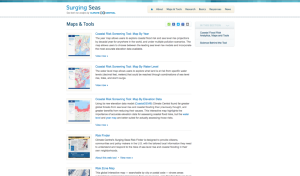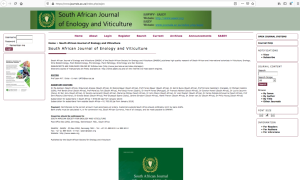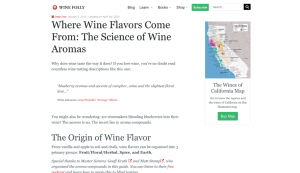 |
May 22, 2020 Volume 26, Number 19 |
General Interest |
Theme: Viticulture and Oenology |
Revisited |
In the News |
General InterestBack to Top | |
 |
|
 |
|
 |
|
 |
|
 |
|
Theme: Viticulture and OenologyBack to Top | |
 |
|
 |
|
 |
|
 |
|
 |
|
RevisitedBack to Top | |
 |
|
In the NewsBack to Top | |
A Woolly Welcome Home: Lost Sheep Reunited with Family After 7 Years | |
|
Prickles the sheep fleeced of seven years of wool after making ewe-turn for home Prickles the missing sheep returns home with 7 years of unshorn fleece Prickles the sheep found after seven years of Tasmania self-isolation UNHCR: Australia Learn About Wool: Lesson Plans 10 Yarn Crafts for Kids Amid the sheer volume of difficult news headlines lately comes a story about a different kind of shear. Prickles the sheep miraculously returned home to her farm and family seven years (and seven missed shears) after fleeing from bushfires. Though the homecoming was not without hiccups, as it took a brief chase to wrangle Prickles into a pickup truck and transport her back to her pasture, she is now happily adjusting to her "retirement paddock." Nonetheless, her long journey home gave her plenty of time to accumulate quite the coat. And, Prickles' family used the long-overdue shearing as an opportunity for a makeover with a side of altruism. They held a friendly competition allowing individuals to guess how much Prickles' wool weighed while raising money for the United Nations High Commissioner for Refugees. On May 1, 2020, Prickles revealed her new trimmed coat. With the loss of 13.6 kilograms of wool came a gain of over $12,000 raised for charity, thanks to the over 200 world-wide donations. [EMB] At the first link, readers will find a story about Prickles the Sheep reported by Edith Bevin for ABC News Australia discussing Prickles's happy homecoming, as well as the momentous haircut and fundraising efforts. The second link leads to a story by Meaghan Wray for Global News with additional details on the initial fundraising goals and efforts. The third link leads to an interview with Prickles's owner Alice Gray, produced by Isabelle Rodd for BBC World News, including video footage of Prickles frolicking in her pasture with her flock. Readers interested in learning more about the United Nations High Commissioner for Refugees (the organization Gray and her family fundraised for using Prickles's wool) should follow the fourth link to a list of press releases, publications, and information about the organization's work. The fifth link leads to a collection of lesson plans from Learn About Wool, an organization creating "extensive classroom resources," about "the on-farm production, processing, marketing and fashion aspects of Australia's natural fibre." If all of these sheep sources have you searching for a related art project, perhaps you will enjoy the final link, which leads to 10 yarn-based craft ideas compiled by Marie LeBaron. | |





